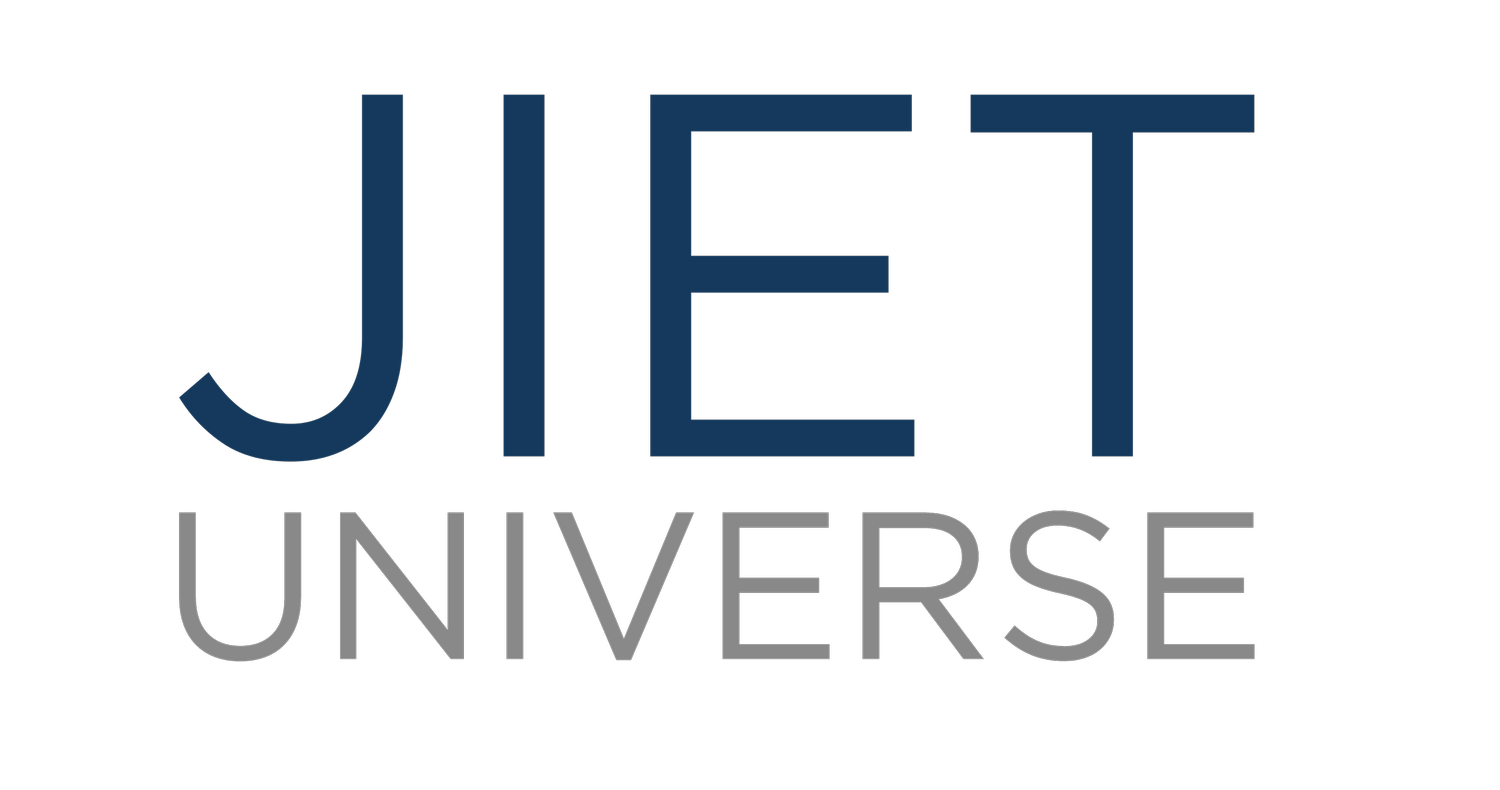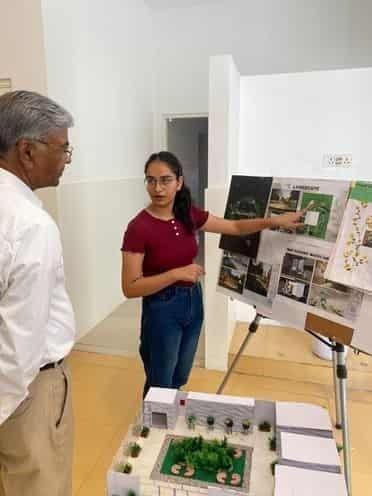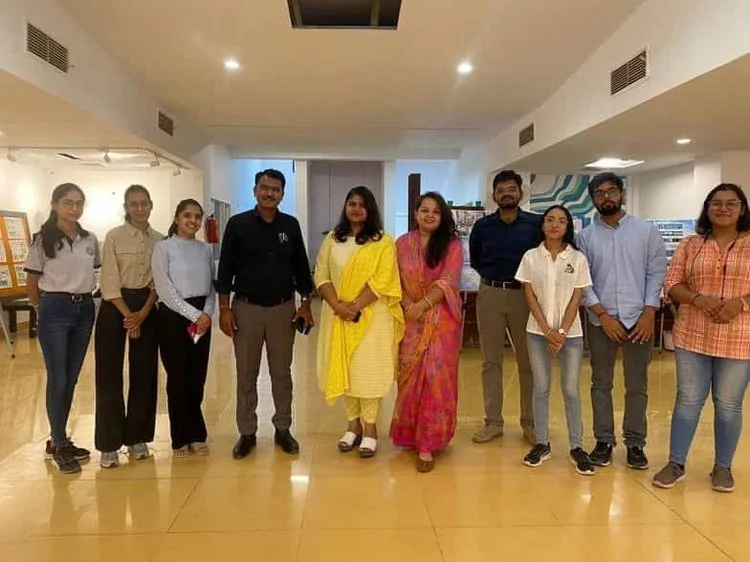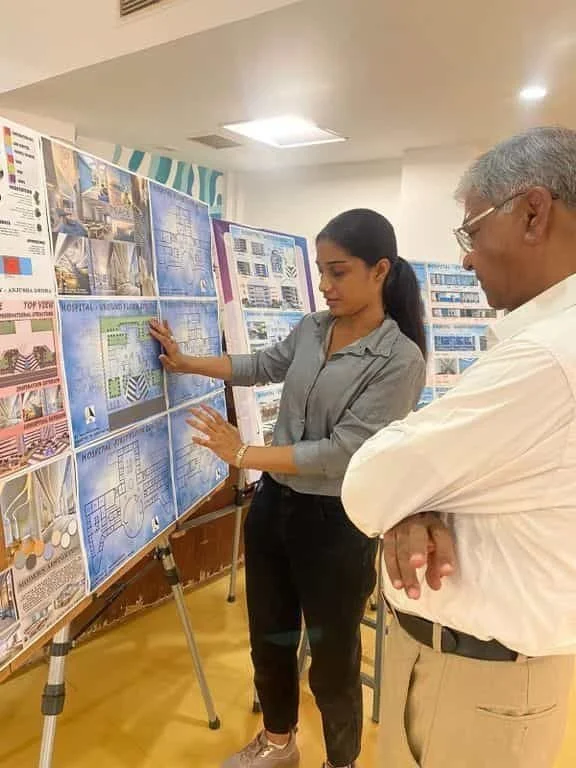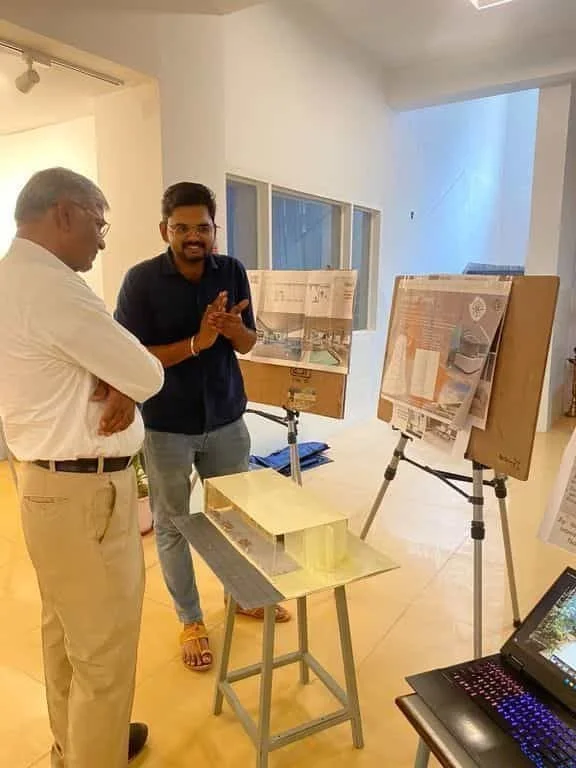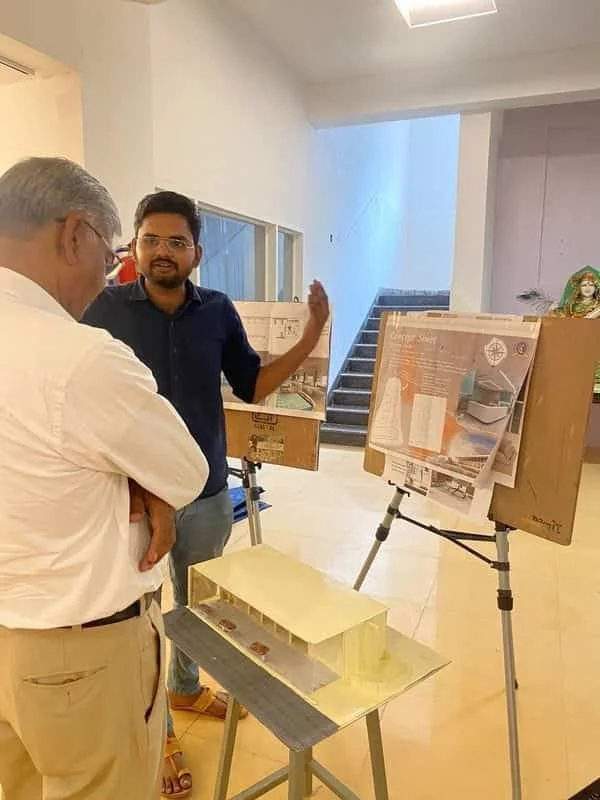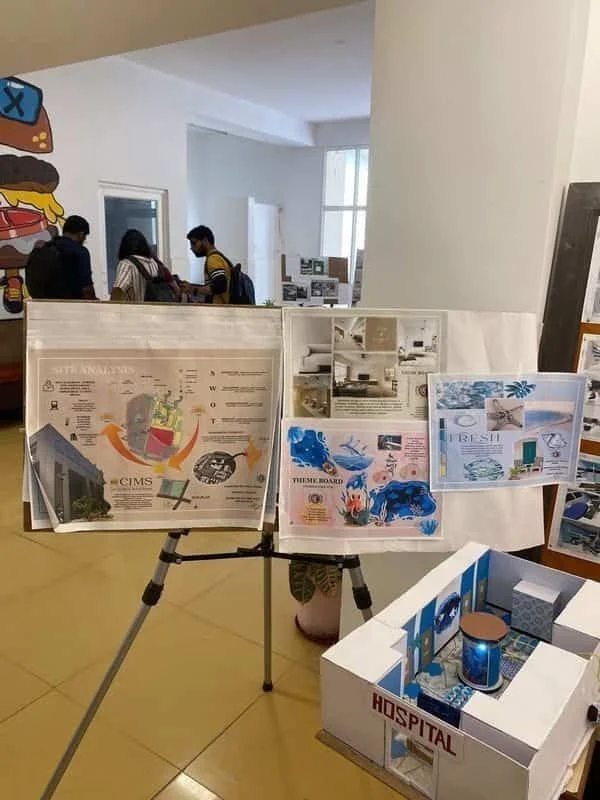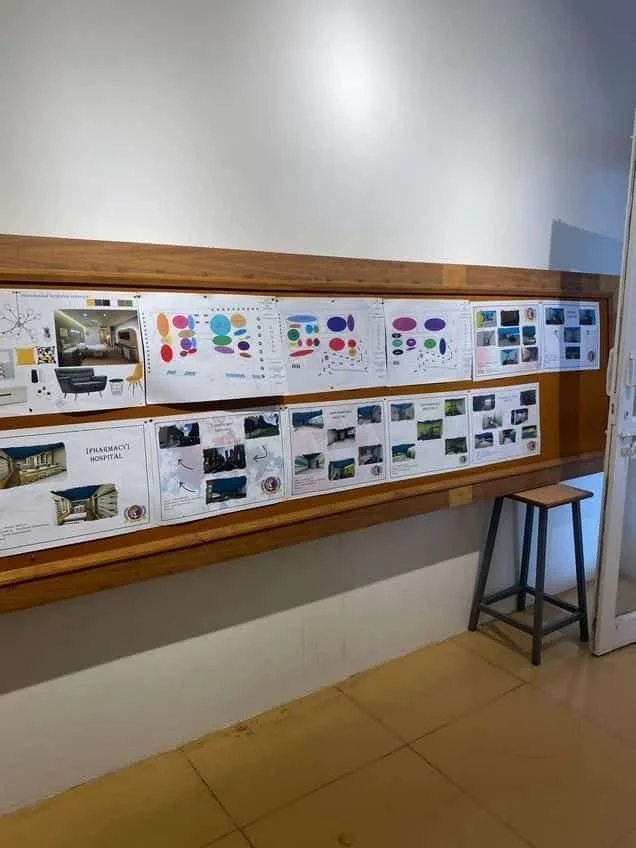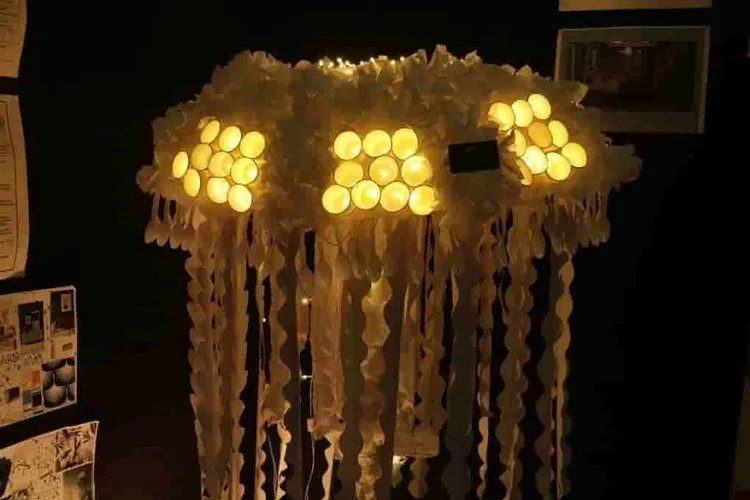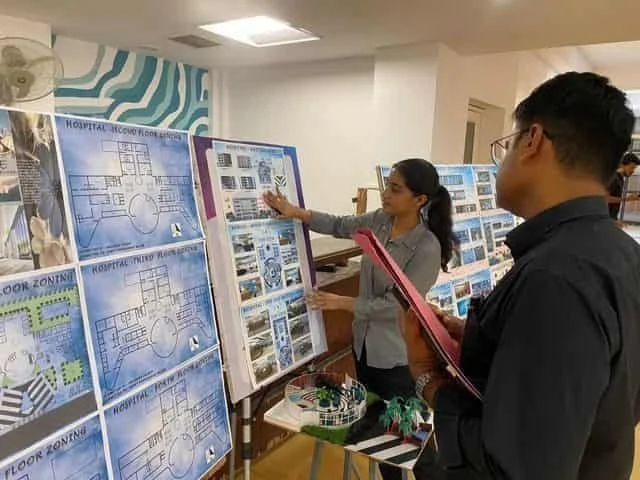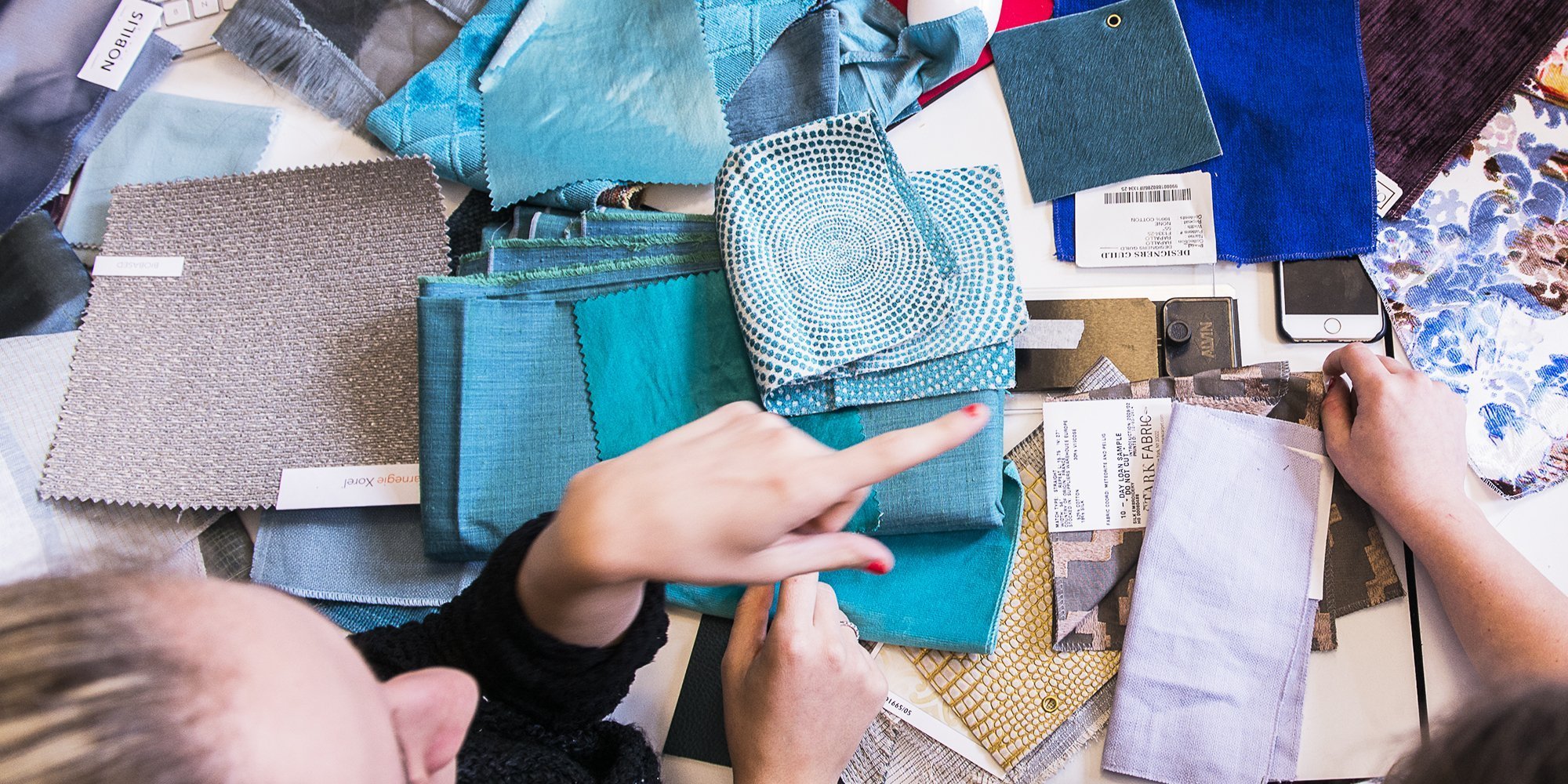
Interior Designing
"An interior is the natural projection of the soul"
Enroll now for best Interior design institute in Rajasthan
Quick links
Fees
Placement
Scholarship
Overview
JIET Design Department is Rajasthan’s first AICTE-approved Design Course to offer UG courses in Design. The institute is approved by AICTE, New Delhi, and affiliated with Bikaner Technical University, Bikaner.
Department offers B. Des degree for three streams which are Fashion Design, Fashion Communication & Interior Design.
Course Highlights
| Course Duration | 4 Years |
| Course Type | Under Graduate |
| Admission Process | Merit Based |
| Eligibility | Pass 12th or equivalent examination with 50% marks |
| Job Profiles | Interior Designers, Interior Decorators, Art Director, Exhibition Designers |
| Employment Sector/Industry | Architectural Firms, Retailers, Interior Design Companies, Designing Consultancies |
Educational Objectives
Empower students to become professional designers, Entrepreneurs, Design Educators, and many more.
Prepare students to design for contemporary market needs while keeping roots in Indian Culture, thus creating an individual identity
Enable students to apply global trends, market intelligence, and technology tools for innovations and Development.
Prepare students for creative design development and promotion, and integrate Design and innovations on national and international platforms.
Collaborative education with multidisciplinary approaches that prepare students to meet the growing needs of the upcoming trends of the industry
Preparing students for the interdisciplinary nature of Design that includes the product, information, and environmental design
Interior Design Placements
Accislob
pepperfry
RADE
SHANTANU & NIKHIL
Studio Disha Wagmari
FABRICLORE
ImaginXP
BASANT
R4U
TRINITY FURNITURE
Top Recruiters
ABHIPRI- The Jodhpuri Paridhan
Red FM93.5
SAADAA
Malani Clothing
Eleganz Interiors Ltd
The Dhoot's Nirmaan Associates
Frame Design Architecture
UJAS
Caffena Coffee
About Interior Design
+ VISION
The Design Department aims to establish a center for imparting design education of international standards and make youth more employment generators rather than employment seekers.
+ MISSION
To develop design thinking rather than design thought. To provide design education for meeting the current and future demands while providing solutions for society & environment as a whole. To provide more job opportunities worldwide, design education provides work from home and freelancing and earning while learning options as well. To establish a center for imparting entrepreneurial and innovative start-ups.
+ PROGRAM EDUCATIONAL OBJECTIVES (PEOs)
The B.Des program offers courses that develop students’ overall comprehensive Knowledge and skills in a wide range of Design studies such as Fashion Communication, Fashion Design, and Interior Design.
The curriculum has identified essential competencies in the respective areas for which holistic education will be provided to the students.
The main objectives of the Bachelor of Design program are:
- Empower students to become professional designers, Entrepreneurs, Design educators, and many more.
- Prepare students to design for contemporary market needs while keeping roots in Indian Culture, thus creating an individual identity.
- Enable students to apply global trends, market intelligence, and technology tools for innovations and Development.
- Prepare students for creative design development and promotion, and integrate Design and innovations on national and international platforms.
- Collaborative education with multidisciplinary approaches that prepare students to meet the growing needs of the upcoming trends of the industry
- Preparing students for the interdisciplinary nature of Design that includes the product, information, and environmental design
+ PROGRAM SPECIFIC OUTCOMES (PSO)
The Design graduates will be proficient in the fundamental of design and able to recognize the visual art forms and their historical and cultural contexts, Development of basic design thinking and communication skills.
- PSO1: Create activities and experiences for the basic process of design, adapt to their abilities, interest, and design in the context of human society, economy, politics, and socio-cultural aspects. The graduates will possess in-depth knowledge of critical and lateral thinking.
- PSO2:Develop a basic design concept, visualization, and manipulation techniques. An appreciation of function, aesthetics, and technology in design.
- PSO3:Appreciate the importance of art and its application in various disciplines of education.
- PSO4:Utilize drawing as a tool of representation and visual communication.
- PSO5:Recognize the design forms and functional aspects with their cultural connections.
- PSO6:Understand the design history in depth with the Development of material, media, and methods used in creative processes and thought.
- PSO7:Know the properties of various materials and learn to handle them in making design prototypes.
- PSO8:To make the designer more tech friendly by the application of different software as a tool for the design solution.
- PSO9: To bring in creative and innovative solutions to the problems and bridge the gap between the general public and designer
PROGRAM OUTCOMES (POs)
- PO1: Conceptual Knowledge: Design approaches to enhance holistic knowledge in Design with a specialized conceptual understanding of Fashion Design, Communication Design, and Interior Design.
- PO2: Ethical Design: Apply ethical practices in professional and social contexts.
- PO3: Design Thinking: Utilize Design method & Process with comprehensive thinking in intellectual, organizational, and personal contexts.
- PO4: Efficient Planning and Management abilities: Demonstrate effective design planning abilities that include resource management, time management, and quality skills. A systematic approach to developing plans and organizing work to meet deadlines.
- PO5: Problem analysis and solution-based design: Utilize the learning principles of Design to understand the customer requirement, thinking critically and analytically while finding solutions for simple to complex problems considering cultural, societal, and environmental aspects of Design.
- PO6: Advance tools and Techniques: Apply upgraded methods and procedures, modern technology, and design-related computing tools with an understanding of the limitations.
- PO7: Leadership skills: Applying leadership and team building skills when planning changes as per the requirement for fulfillment of practice, professional and social responsibilities.
- PO8: Professional Identity: Understand, analyze, and communicate the value of their professional roles in society
- PO9: Communication: Communicate effectively with the Design Community and with society at large.
- PO10: Sustainability & Design for Environment: Understand the impact of professional Design solutions in societal and environmental contexts, and demonstrate the knowledge of and need for human-centric sustainable development.
+ BRANCH BENEFITS
- Industry Exposure
- Hands-on skill approach
- Constant Change and Innovation
- Outstanding Job Prospects
- Global Career
+ CURRICULUM
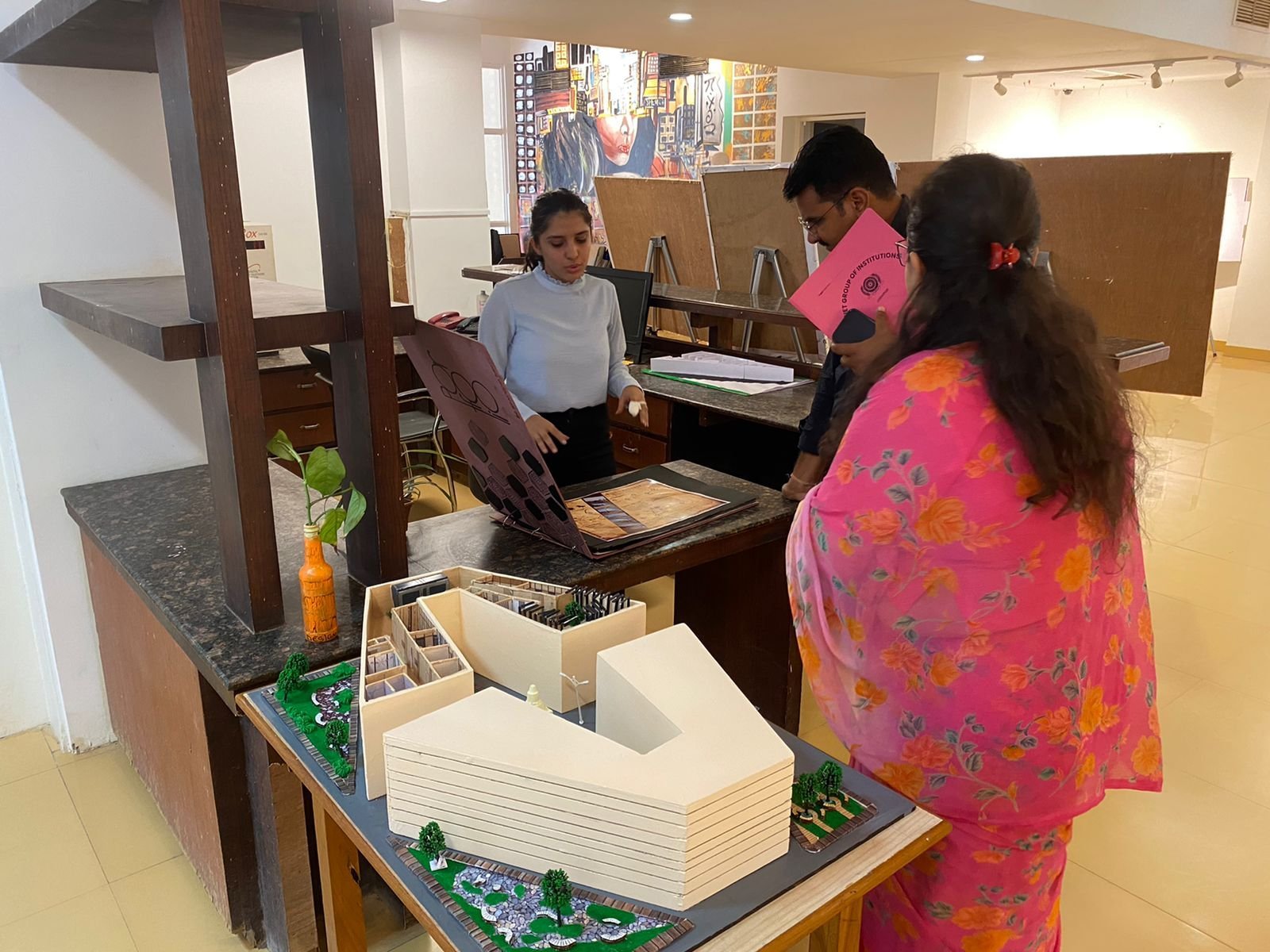
CAREER OPPORTUNITIES:
·Interior and Spatial Designers, Lighting Designers, Visual Merchandisers, Production designers/Art directors, Exhibition designers, furniture designers, kitchen designers, product designers, textile designers, stylists, and production designers.
Department Best Practices
Industry co-teaching
Exposure to open-source tools
Innovative teaching-learning pedagogy
Project-based learning
Skill enhancement via clubs
International teaching and research collaborations
Enhancing self-learning attitude via experiential learning
Prominent Faculty of Interior Design
Interior Design Laboratories:
Illustration Lab
Drafting Lab
Media Room
Photography Lab
CAD Lab
Garment Construction Lab
Pattern Making Lab
Art Studio
Textile & Printing Lab
Testimonials
Blogs
FAQs
1. Why JIET for Interior Design?
- The college is considered one of the best institutes for interior designing, owing to the ample opportunities students can get in terms of careers and jobs.
- Being autonomous ensures creating of a curriculum that can focus on merging theoretical and industrial practical knowledge for a better education system.
- All the exams are held at the college campus, and the questions are based on the practical implementation of theoretical knowledge.
- Students also join internship programs and learn how things are being done in reality.
2. Why Choose Interior Design?
- There is no doubt that interior design will have a huge market worth in the coming years, especially when people will understand its importance in terms of health, living standards, etc.
- Interior designers can either work for reputed firms worldwide or start businesses with a quicker turnover and higher profit margins.
- As interior designers are in high demand, one won't have to worry about not getting enough opportunities at the job level.
- Interior designers are trained and taught to bring more innovation and creativity to their work while offering clients sustainable, eco-friendly, efficient, and productive interior design solutions.
